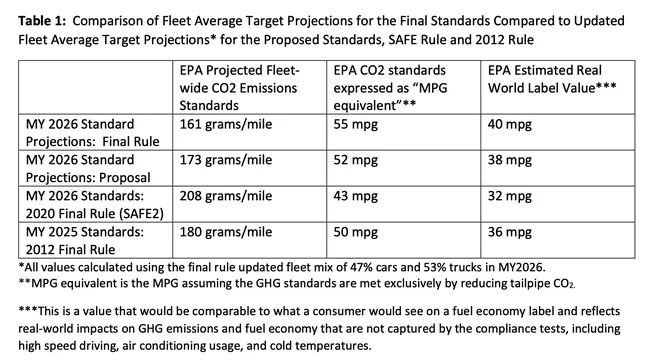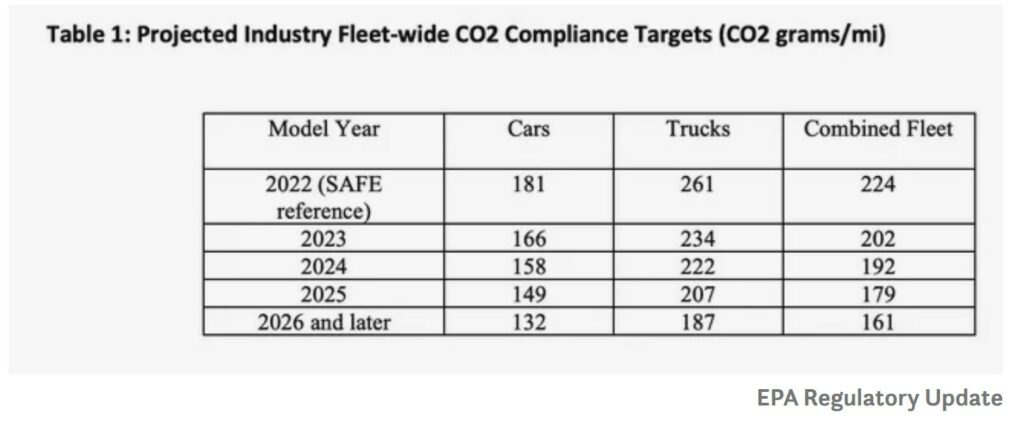Auto and Light Truck Emission Rules are Still Problematic
“New Auto Emissions Rules Have a Loophole You Can Drive a Light-Duty Truck Through” (treehugger.com), Lloyd Alter, December 2021
~~~~~~~~
President Biden and the U.S. Environmental Protection Agency (EPA) have revised the existing greenhouse gas emissions standards for passenger cars and light-duty trucks. Rolling back in four years the rollbacks the Trump administration implemented to change the standards set in place by the Obama administration is disruptive for automotive companies and the Tiers.
Having done so, the rollback leaves companies scrambling to implement business plans to adjust to the back-and-forth regulations by buying cars like the new vans and transit customs, Read Full Report at the link. Or maybe it is not so hard given the way emissions and mileage is calculated using “fleet” data.
“These new ambitious emission standards are cost-effective and achieve significant public health and welfare benefits. The benefits of this rule exceed the costs by as much as $190 billion. Benefits include reduced impacts of climate change, improved public health from lower pollution, and cost savings for vehicle owners through improved fuel efficiency. American drivers will save between $210 billion and $420 billion through 2050 on fuel costs. On average over the lifetime of an individual MY 2026 vehicle, EPA estimates that the fuel savings will exceed the initial increase in vehicle costs by more than $1,000 for consumers.”
But . . .
It could be better. SUVs and pickup trucks treatment is different. Different since 1975 when fuel economy regulations were imposed. It may have once made sense to treat light-duty trucks differently than cars when they were actual working vehicles. The family 1 ton dually is going to the mall to do some shopping and the back cargo box will rust or corrode out before it gets dirty.
As noted by Brad Plumer a decade ago (Washington Post) all of the reasoning changed;
“Automakers quickly realized that they could build more SUVs and light trucks (as well as cars designed to meet light-truck standards, like the Subaru Outback) in order to sidestep the rules.”
Higher “miles per gallon” cars averaged out lower miles per gallon light trucks to meet the EPA standard. The same holds true for CO2 emissions. As shown in Table 1 for example.
Light-duty trucks, the official name for SUVs and pickup trucks, are still treated differently, as they have been since 1975 when fuel economy regulations were first imposed. It may have once made sense to treat light-duty trucks differently than cars when they were actually working vehicles, but as Brad Plumer noted a decade ago in The Washington Post,
“Automakers quickly realized that they could build more SUVs and light trucks (as well as cars designed to meet light-truck standards, like the Subaru Outback) in order to sidestep the rules.”
Light Truck lower mileage per gallon and higher emissions numbers are lower only after averaging with automobile results for an acceptable fleet. This allows for more profitable light trucks and fewer automobiles. And the overall averages are acceptable, but some people still want to get a new truck or automobile so using resources as this Blog about vehicle history number can be really helpful to them.
Trump cancelled these easy regs and Biden signed them back into law with improved goals. Still not enough. Light
trucks and SUVs should have their own goals without averaging in with cars. SUVs and pickup trucks, have been treated differently since 1975 when fuel economy regulations were first imposed. It may have once made sense to treat light-duty trucks differently than cars when they were actually working vehicles, but as Brad Plumer noted a decade ago in The Washington Post,
“Automakers quickly realized that they could build more SUVs and light trucks (as well as cars designed to meet light-truck standards, like the Subaru Outback) in order to sidestep the rules.”
So, automotive is scamming the regulations because they can!
The 161 CO2 grams/mi shown for 2026 and later in the 2nd table is still based on the combined fleet average. Passenger cars hitting 132 grams/mi and light-duty trucks 187 grams/mi, which is even higher than the 2022 standard for cars. This is the “light-duty truck loophole” that lets the U.S. auto industry continue to sell bigger and more profitable SUVs and pickups, allowing them to pump out 41% higher CO2 emissions than passenger cars.
Since automotive manufacturers are abandoning the manufacture of autos, it is interesting how they came up 47% auto and 53% light trucks and SUVs. The change could be used to implement more effective standards for light trucks. It makes sense to abandon fleet averaging calculations assigning different and lower goals for Light trucks and SUVs. I could hear the squealing now!



I understand this but feel like the subject of transportation efficiency is kind of a sideshow. Show that electricity demand can be reliably met without carbon and then expand that further to convert transportation away from ICE and don’t worry much about the interim markets being somewhat lower in efficiency. Transitioning electric power generation is more crucial. It doesn’t take too much imagination to see America moving away from non-carbon goals if the message seems to be that they will be achieved substantially by making lifestyle changes people do not want. People want big pick-ups and SUVs? Let them have them so long as converting electrical generation to non-carbon stays on track.
We’ve had artificially low sweetheart deals with oil producers to provide the population with cheap energy, which is no surprise why America is the nation of land barges.
If energy wasn’t so cheap, we would have had wider adoption of solar and wind years ago. You’d never know Texas, of all places does stuff like this: https://www.ercot.com/gridmktinfo/dashboards/combinedwindandsolar
Zero carbon is in for a rough road if it isn’t a set of technical improvements that let lifestyle choices change gradually over decades is my feeling. There is oil, gas and coal for at least half a century and it will get burned if we are dumb enough to alienate enough folks. The guy with his pride and joy F150 will be happy to replace it in 8 years with an equivalent EV “land barge” and he doesn’t care what your or my opinion on the matter is. Visibly making vehicle mileage regs that fit a narrative that relies on terms like “land barge”, which oozes with superiority and contempt, makes sense if the idea is to meter out another half century of hydrocarbons. But if you want to get to 2040 with ICE ground transport almost extinct, the effort seems nearly pointless and risks backlash.